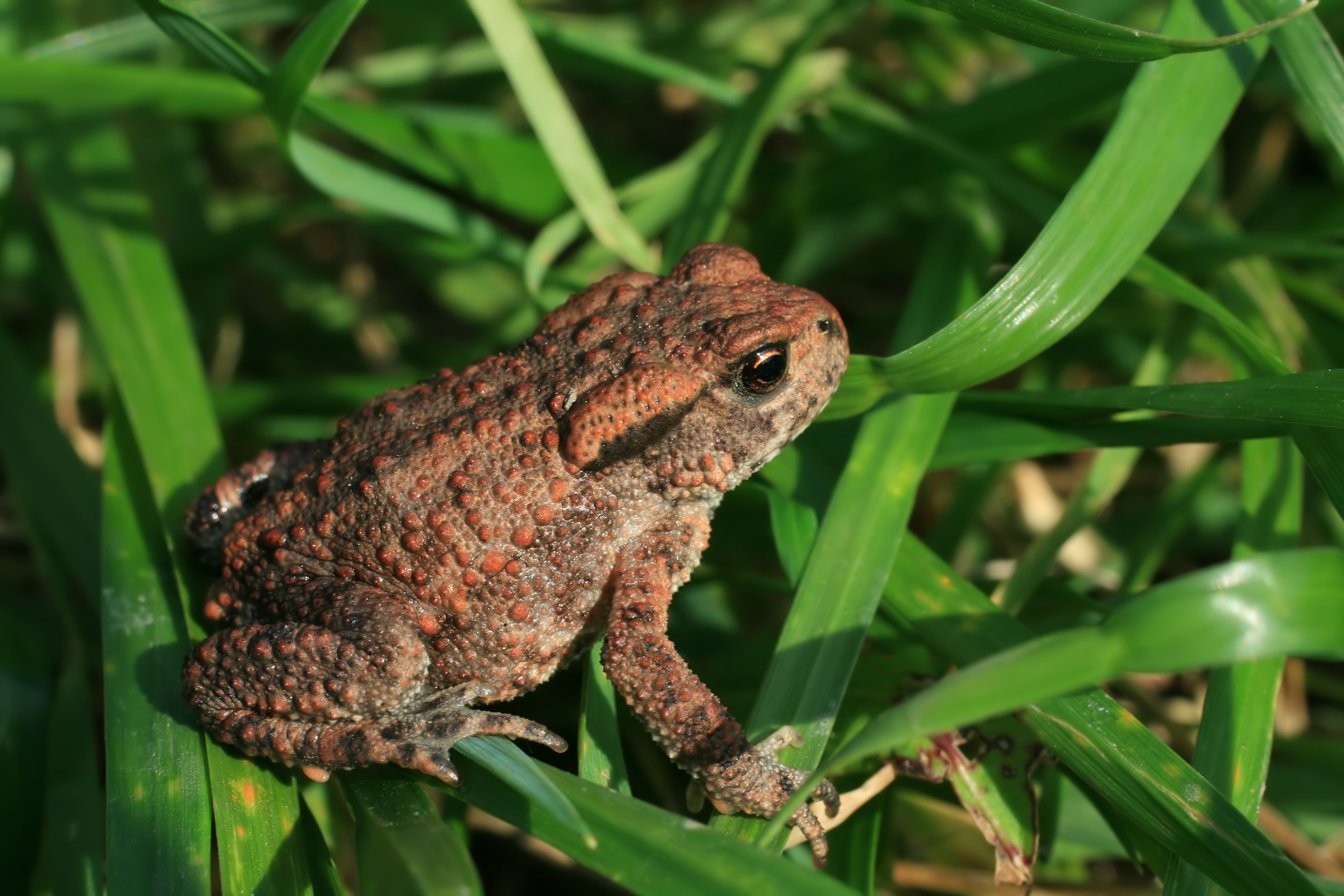The male Common toads are often found piggybacking on the females on their way to the breeding waters.
Description
The body length of males in Central Europe is up to nine centimetres, while females grow up to twelve centimetres long. The relatively large animals have a stocky body covered with warty skin glands on the upper side and a broad, short, rounded head. On the back of the head are prominent, paired, bean-shaped glands (parotids), which contain toxins for defence against predators. The upper side is usually grey to reddish brown; the males are sometimes black-brown or light clay-coloured, while the females are more reddish.
Habitat
The Common toad is a cold-blooded animal that is generally active at dusk. During the day, the animals rest under stones, dilapidated walls, dead wood, leaves, bushes or in burrows they have dug themselves. As terrestrial habitats, they colonize a broad spectrum of biotopes, ranging from forests to semi-open landscapes of meadows, pastures and hedges to semi-natural gardens.
Call
Male Common toads rarely emit a soft, slow call in spawning waters, which resembles "uuk ... uuk ... uuk..." which sometimes has a metallic creaking sound. This can usually be observed outside the relatively short spawning season or in waters where there are very few common toads. Short, louder sounds emitted in quick succession ("uk, uk, uk") are "release calls" made by males that are mistakenly grabbed by other males. These vocalisations are heard much more frequently than the actual mating calls.
Breeding call example:
Wikimedia Commons Licence Odé Baudewijn CC BY-SA 4.0 international
Source: The text is an excerpt from Wikipedia (https://de.wikipedia.org/wiki/Erdkröte). The text is available there under the licence "Creative Commons Attribution/Share Alike". Status: 10 July 2023.

 DE
DE  EN
EN 









